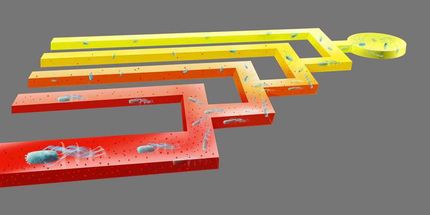Understanding how cells migrate
Advertisement
Migration of cells in response to chemicals in the external environment is vital for the correct functioning of all life from bacteria to multi-cellular organisms. Understanding the mechanisms involved is central to studies of normal development as well as disease states like cancer. This special issue of the journal Integrative biology highlights the contributions of novel tools and technologies to this important field.
A broad spectrum of technology and biology is included: topics covered include neutrophil and Dictyostelium chemotaxis, mechanobiology, amoeboid migration and the application of microfluidics to the study of directed cell migration. Technology for in vivo studies and improved methods for studying axon guidance are also included. Finally, the role of chemotaxis in cancer is examined.
“The integration of technology and biology has matured further here than in many other areas of biological study” says David Beebe from the University of Wisconsin-Madison’s department of biomedical engineering. “The papers in this issue highlight advances in technology that allow investigators to address fundamental questions about directed migration that provide insight into basic mechanisms and provide tools for drug discovery and clinical intervention” he added.
Original publication: David J. Beebe and Anna Huttenlocher, Integr. Biol., 2010, 2, 559-560.
Most read news
Other news from the department science

Get the life science industry in your inbox
By submitting this form you agree that LUMITOS AG will send you the newsletter(s) selected above by email. Your data will not be passed on to third parties. Your data will be stored and processed in accordance with our data protection regulations. LUMITOS may contact you by email for the purpose of advertising or market and opinion surveys. You can revoke your consent at any time without giving reasons to LUMITOS AG, Ernst-Augustin-Str. 2, 12489 Berlin, Germany or by e-mail at revoke@lumitos.com with effect for the future. In addition, each email contains a link to unsubscribe from the corresponding newsletter.






















































